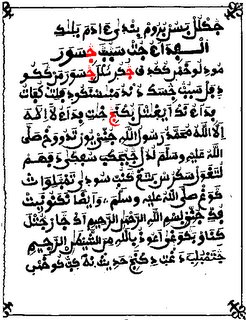- Istanbul, apparently, derives from the Greek phrase eis ten polin, "in the city";
- 'usquuf, "bishop" in Arabic, which apparently derives from a Coptic reinterpretation of Greek episkopos "bishop" as e-pi-skopos "to the skopos", due to which skopos was reanalyzed as meaning "bishop".
And a couple of interesting language sites I've come across:
RohingyaLanguage.com is a speaker's effort to promote the Rohingya language. The Rohingya are a Muslim minority group of the western coast of Burma. Like virtually all Burma's inhabitants, they have been seriously mistreated by the government. Apparently, their language is most closely related to (a dialect of?) Chittagongian Bengali. If anyone figures out what the acute accent is meant to indicate, do tell me...
Atmazret.info (in French) is all about the endangered Berber language of Tamezret in southern Tunisia, written by a descendant of speakers. Though he's not a trained linguist, this qualifies as quite an important documentation effort in its own right; as far as I know, the only other thing ever published on the Tamezret dialect was Märchen der Berbern von Tamzratt im Süd-Tünisien in 1900, more than a century ago.
